
Black or white bugs on your cannabis plant? Having trouble with flies, caterpillars, spider webs, or sudden holes in your plant’s leaves? You are certainly not alone. If you grow cannabis outdoors, the solution can be simple and natural: companion planting. Companion planting is like giving your cannabis plant a buddy. There are companion plants for cannabis that have particularly good properties against pest infestations on the most valuable plant in your garden.
There are both attracting and repelling plants, which theoretically creates a one-way street for bugs in your garden. But there are also plants that attract other beneficial insects. Ladybugs, nematodes, parasitic wasps, and predatory bugs are your best friends when growing cannabis outdoors.
In this Article
Avoiding Monoculture
While companion planting is a popular term, the philosophy behind it is not new. The idea is that monoculture is unhealthy and leads to problems. Monoculture is the cultivation of just one crop. If you only have a cannabis plant in your garden, you can bet that pests like spider mites, thrips, or slugs will come over to feast on your THC-deprived plants. No leaves or flowers, no yield.
Organic Pest Control
Another benefit of using companion plants with your cannabis plant is that you won’t need to resort to chemical pesticides. This not only makes your grow more eco-friendly but also improves the microclimate in your garden, which benefits your plants. Let’s list the common pests and the plants that can help prevent them.
Common Pests and Companion Plants for Cannabis Plants to Prevent Them
Aphids
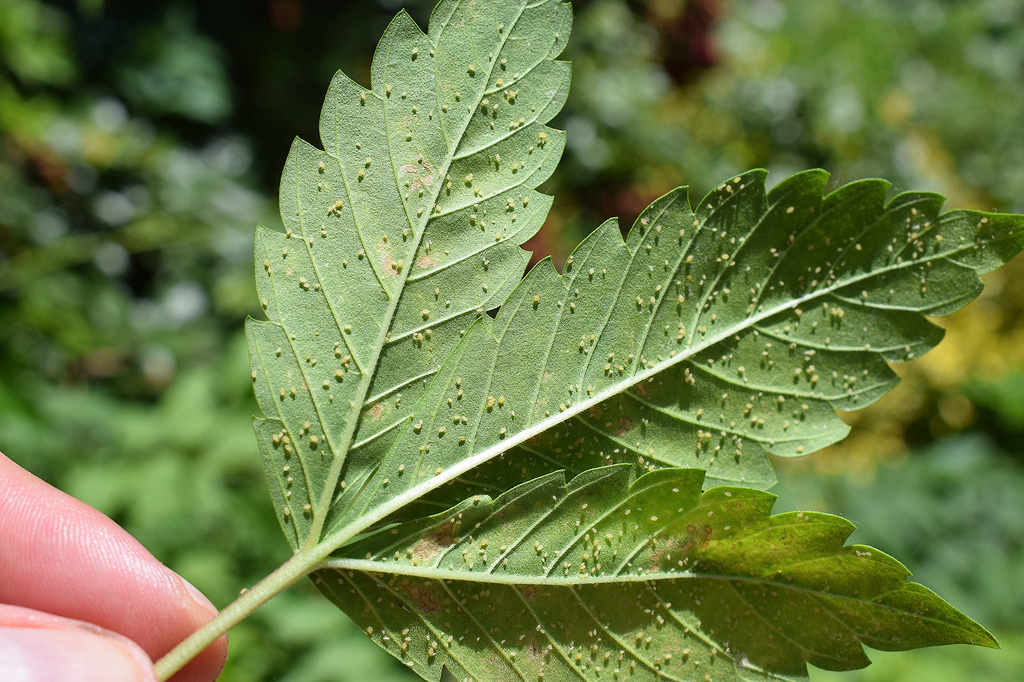
Foxglove (Digitalis purpurea)
Foxglove has a repelling effect on aphids, keeping them away from your cannabis plants.
-
Sow in: May
-
Best location: Sunny to semi-shade areas with well-draining soil.
Nasturtium (Tropaeolum majus)
Nasturtium attracts aphids, making them choose this plant over your cannabis plants.
-
Sow in: April
-
Best location: Sunny areas with well-draining soil.
Lupine (Lupinus spp.)
Lupine attracts aphids, which concentrate on this plant, reducing damage to your cannabis plants.
-
Sow in: April
-
Best location: Sunny to semi-shade areas with well-draining soil.
Ginger (Zingiber officinale)
Ginger has a repelling effect on aphids due to its strong scent.
-
Sow in: Spring
-
Best location: Sunny to semi-shade areas with moist, well-draining soil.
Onion (Allium cepa)
Onions keep aphids away with their scent, protecting your cannabis plants.
-
Sow in: March
-
Best location: Sunny to semi-shade areas with well-draining soil.
Carrot (Daucus carota)
Carrots attract aphids, reducing the risk to your cannabis plants.
-
Sow in: March
-
Best location: Sunny areas with well-draining, sandy soil.
Celeriac (Apium graveolens var. rapaceum)
Celeriac acts as bait for root aphids, protecting your cannabis plants.
-
Sow in: February (under glass), May (outdoors)
-
Best location: Sunny to semi-shade areas with well-draining, moist soil.
Spider Mites
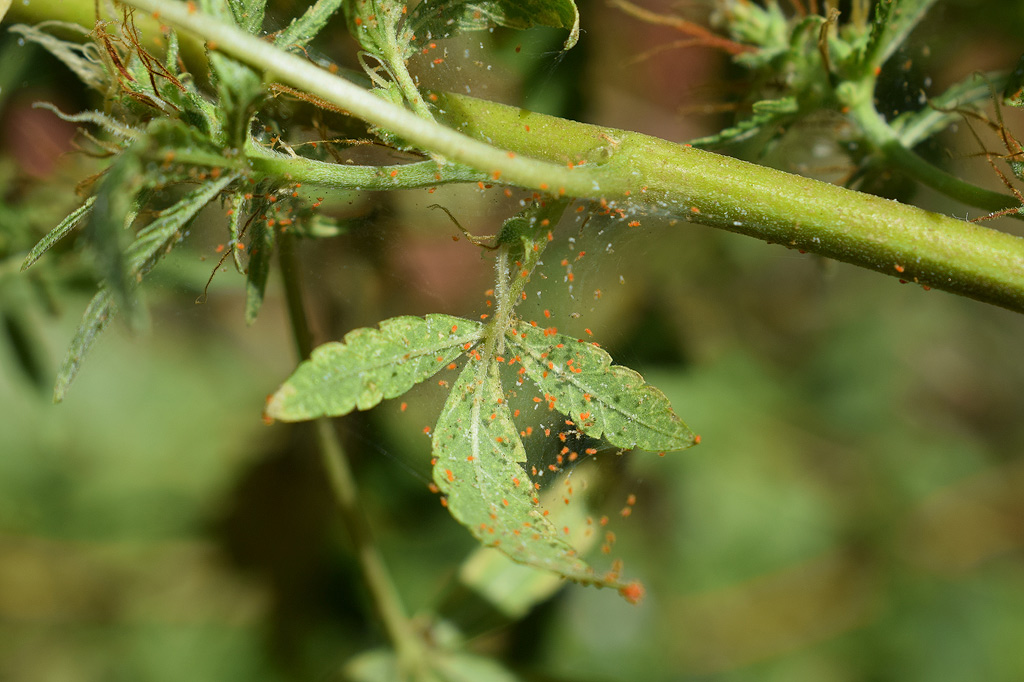
Rosemary (Rosmarinus officinalis)
The scent of rosemary helps repel spider mites and supports the overall health of your plants.
-
Sow in: April
-
Best location: Sunny, well-draining soil.
Chamomile (Matricaria chamomilla)
Chamomile supports the overall health of the plant and helps repel spider mites.
-
Sow in: March
-
Best location: Full sun to light shade, well-draining soil.
Kale (Brassica oleracea var. acephala)
Kale attracts spider mites, reducing the chance of them settling on cannabis.
-
Sow in: April
-
Best location: Sunny to semi-shade areas with fertile, well-draining soil.
Cabbage (Brassica oleracea var. capitata)
Spider mites also love other cabbage varieties like red cabbage, pointed cabbage, and green cabbage, helping to protect your cannabis plants better.
-
Sow in: March
-
Best location: Sunny to semi-shade areas with well-draining soil.
Whitefly
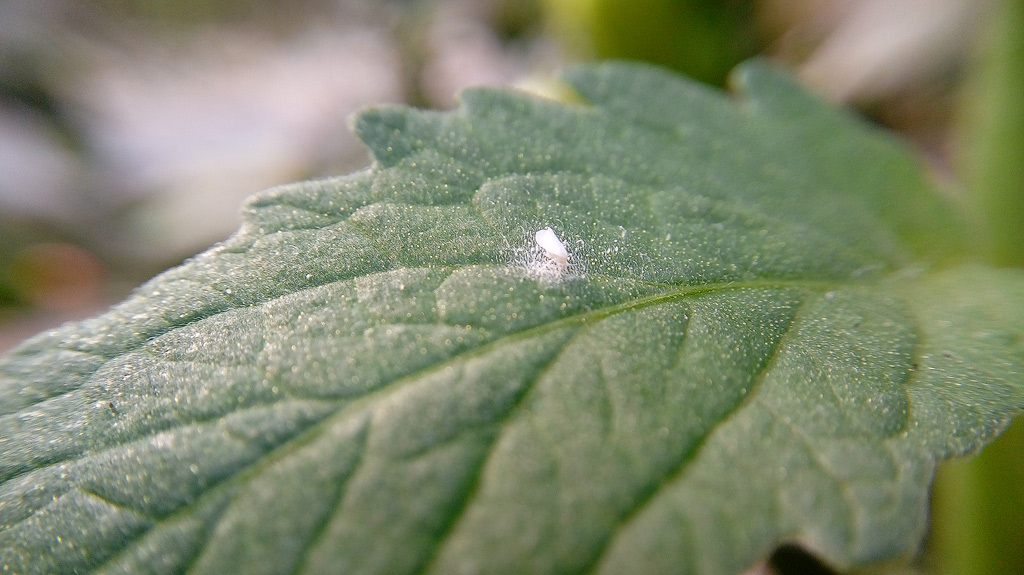
Beans (Phaseolus spp.)
Beans can repel whiteflies and also fix nitrogen in the soil, which is beneficial for cannabis plants.
-
Sow in: May
-
Best location: Sunny areas with well-draining soil.
Alyssum (Lobularia maritima)
Alyssum attracts beneficial insects that feed on whitefly, helping to protect your cannabis plants.
-
Sow in: March
-
Best location: Full sun to light shade, well-draining soil.
Mallow (Malva sylvestris)
Mallow is highly attractive to whitefly, making them leave your cannabis plants alone.
-
Sow in: April
-
Best location: Sunny to semi-shade areas with fertile, moist soil.
Tomato (Solanum lycopersicum)
Tomato plants attract whitefly, keeping them away from your cannabis plants.
-
Sow in: February (under glass), May (outdoors)
-
Best location: Sunny areas with well-draining, nutrient-rich soil.
Caterpillars
Sage (Salvia officinalis)
Sage helps keep caterpillars at bay with its strong scent.
-
Sow in: April
-
Best location: Sunny areas with well-draining, slightly moist soil.
Dill (Anethum graveolens)
Dill attracts predatory insects that eat caterpillars, helping to protect your cannabis plants.
-
Sow in: April
-
Best location: Full sun, light, well-draining soil.
Brassicas (Brassica spp.)
Caterpillars, such as the cabbage white butterfly, prefer brassicas over cannabis, protecting your plants from caterpillars.
-
Sow in: March
-
Best location: Sunny to semi-shade areas with fertile, well-draining soil.
Amaranth (Amaranthus spp.)
Amaranth is attractive to various types of caterpillars that could otherwise damage cannabis.
-
Sow in: May
-
Best location: Sunny areas with well-draining soil.
Thrips
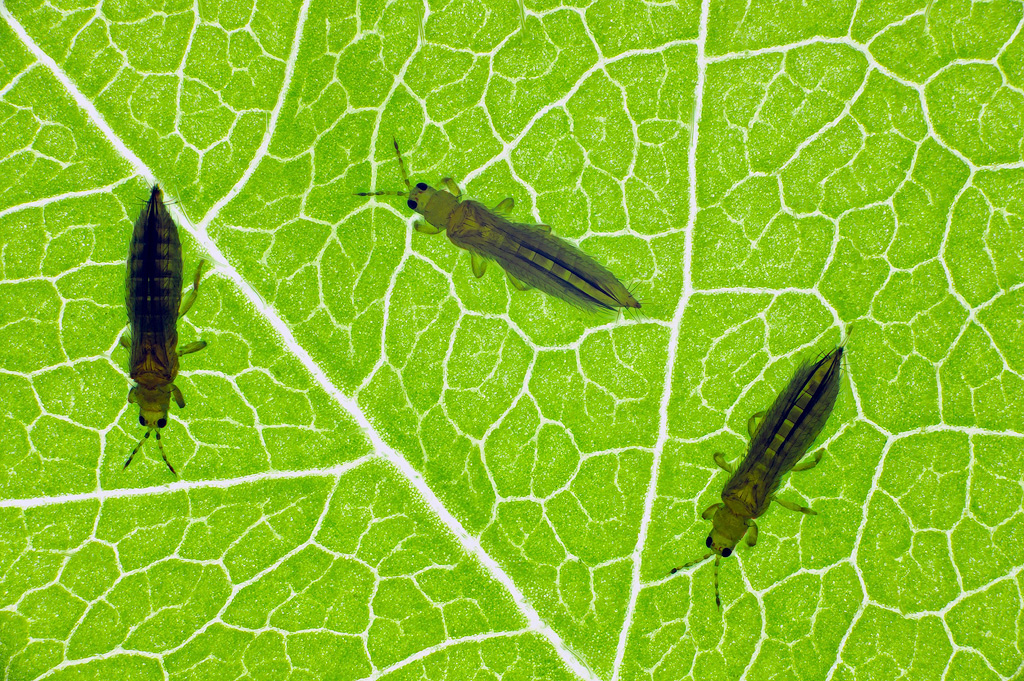
Wormwood (Artemisia absinthium)
The strong scent of wormwood can repel thrips and helps protect your cannabis plants. You can also use the herb to make your own absinthe, which fits nicely in a garden with homegrown psychedelics.
-
Sow in: April
-
Best location: Sunny to semi-shade areas with well-draining soil.
Lettuce (Lactuca sativa)
Lettuce works well as a trap plant for thrips, sparing your cannabis plants.
-
Sow in: March
-
Best location: Sunny to semi-shade areas with moist, well-draining soil.
Onion (Allium cepa)
Onions attract thrips, which prefer onions over cannabis plants.
-
Sow in: March
-
Best location: Sunny to semi-shade areas with well-draining soil.
Fungus Gnats
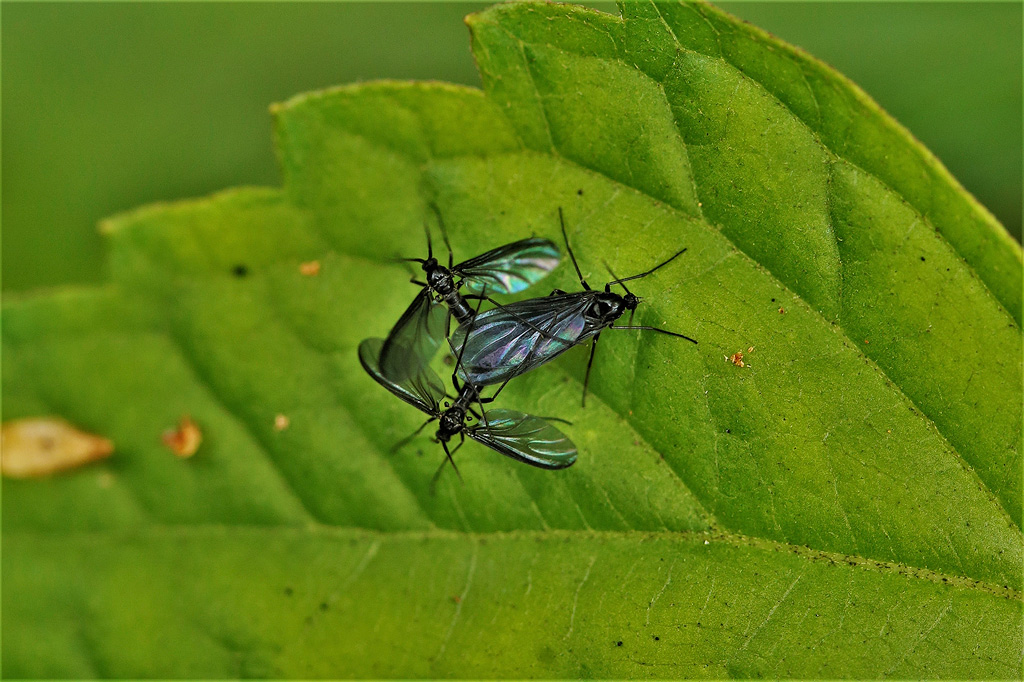
Marigold (Calendula officinalis)
Marigold works against the larvae of fungus gnats and helps maintain the health of your cannabis plants.
-
Sow in: March
-
Best location: Sunny to semi-shade areas with well-draining soil.
Red Clover (Trifolium pratense)
Red clover improves soil structure and keeps pests like fungus gnats away.
-
Sow in: March
-
Best location: Sunny to semi-shade areas with well-draining soil.
Cucumber (Cucumis sativus)
Cucumber can serve as a distraction plant for fungus gnats, reducing the damage to your cannabis plants.
-
Sow in: May
-
Best location: Sunny areas with well-draining, moist soil.
Bell Pepper (Capsicum annuum)
Bell peppers act as bait for fungus gnats, especially when the soil is too moist.
-
Sow in: February (under glass), May (outdoors)
-
Best location: Sunny areas with well-draining, fertile soil.
Mealybugs
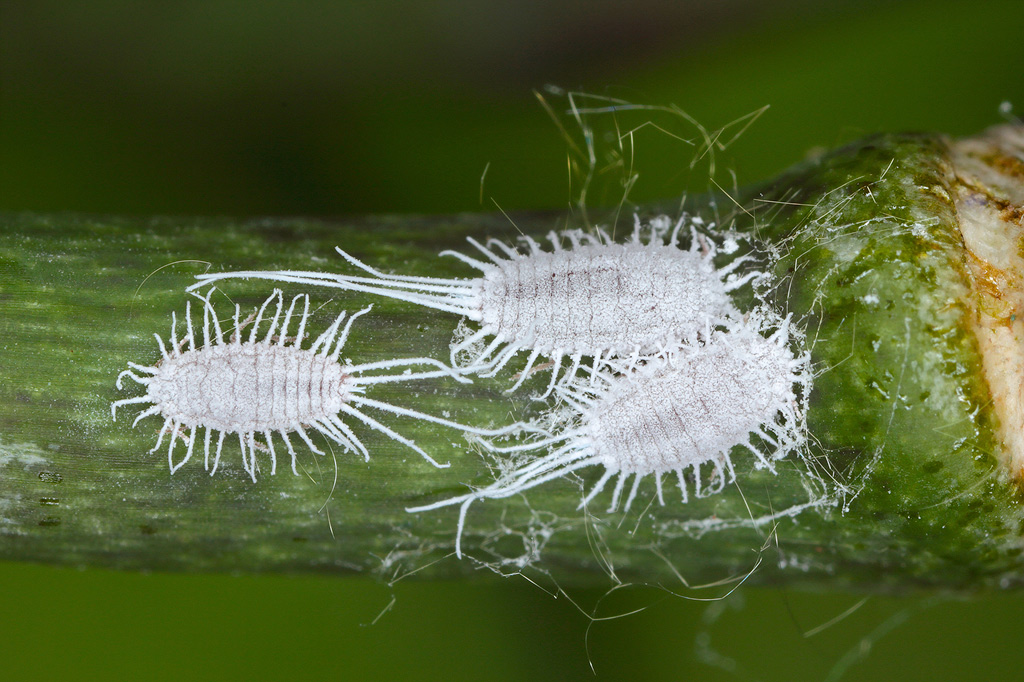
Lovage (Levisticum officinale)
The scent of lovage can repel mealybugs and protect your cannabis plants.
-
Sow in: March
-
Best location: Sunny to semi-shade areas with moist, well-draining soil.
Parsley (Petroselinum crispum)
Parsley helps against root pests and acts as ground cover to keep mealybugs away.
-
Sow in: March
-
Best location: Sunny to semi-shade areas with well-draining soil.
Potato (Solanum tuberosum)
Potatoes attract mealybugs, making them leave your cannabis plants alone.
-
Sow in: April
-
Best location: Sunny areas with well-draining soil.
Dahlia (Dahlia spp.)
Dahlias are attractive to mealybugs, keeping them away from your cannabis plants.
-
Sow in: May (plant bulbs)
-
Best location: Sunny to semi-shade areas with well-draining, fertile soil.
Slugs
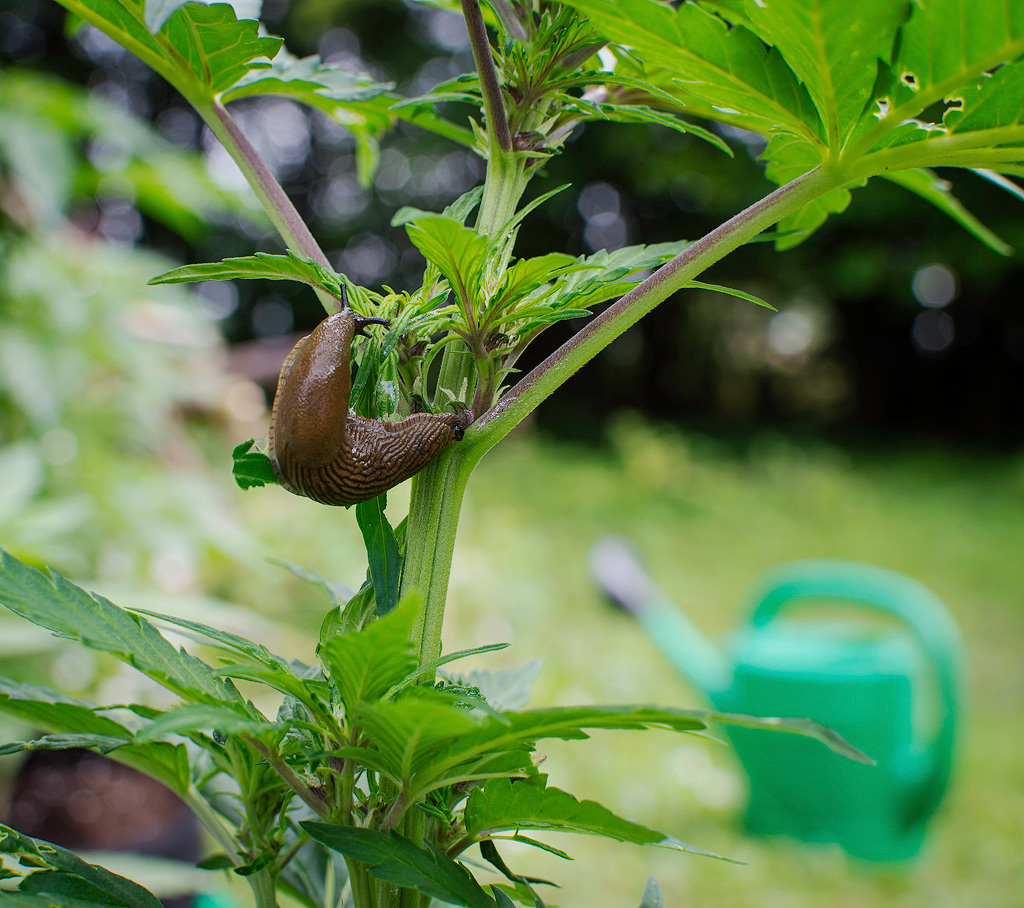
Marigold (Tagetes erecta)
The scent of marigolds keeps slugs away, protecting your cannabis plants.
-
Sow in: April
-
Best location: Sunny areas with well-draining, fertile soil.
Catnip (Nepeta cataria)
Catnip repels slugs and attracts beneficial insects that protect your plants.
-
Sow in: March
-
Best location: Sunny to semi-shade areas with well-draining soil.
Hosta (Hosta spp.)
Slugs love the large leaves of hostas, which can help keep them away from your cannabis plants.
-
Sow in: Spring (transplant seedlings)
-
Best location: Semi-shaded to shaded areas with moist, well-draining soil.
Lettuce (Lactuca sativa)
Lettuce works as a trap plant for slugs, reducing the risk to your cannabis plants.
-
Sow in: March
-
Best location: Sunny to semi-shade areas with moist, well-draining soil.
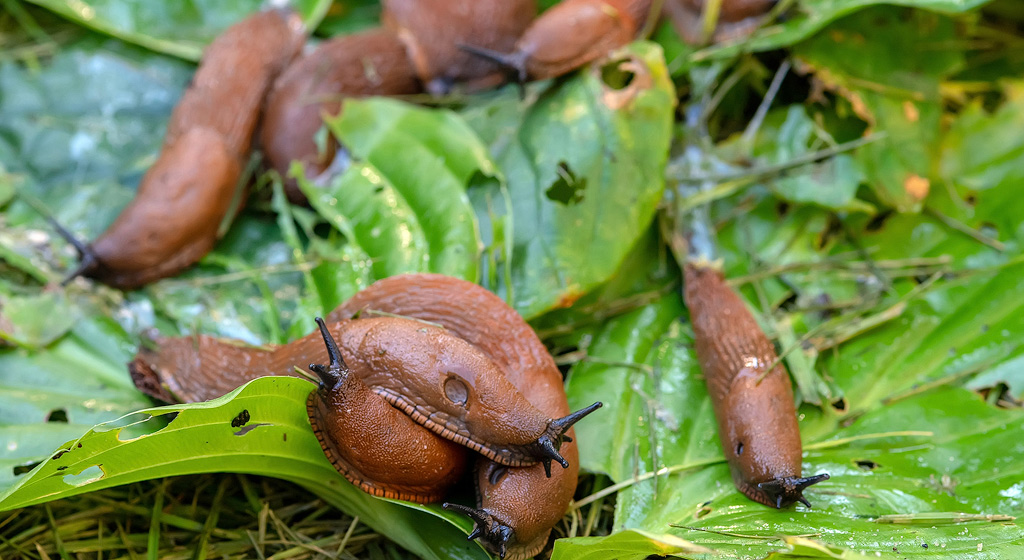
A slug infestation on a hosta. Better there than on your cannabis plant, right?
Tip: Introduce Natural Predators
Some plants even have a dual purpose. If you plant the following plants near your cannabis plant, you will soon attract the natural predators of the pests mentioned earlier. That’s the most natural pest control.
-
Dill (Anethum graveolens) - Attracts hoverflies and parasitic wasps, which feed on aphids and caterpillars.
-
Marigold (Calendula officinalis) - Attracts ladybugs and hoverflies, which fight harmful insects like aphids.
-
Chamomile (Matricaria chamomilla) - Attracts parasitic wasps and hoverflies, which help control aphids and other pests.
-
Coriander (Coriandrum sativum) - Attracts parasitic wasps, which are effective against aphids and caterpillars.
-
Borage (Borago officinalis) - Attracts bees and hoverflies, which help fight aphids and other harmful insects. By the way, an extract from borage also works well against a hangover!
Plants Against Pests in the Vegetable Garden
If you read between the lines, you’ll see that some plants attract insects while others repel them. This knowledge is also useful to apply in your vegetable garden. Even if it’s just a few vegetables planted next to your cannabis plant. Together, they have mutual benefits.
Plants Against Mosquitoes
If there is one insect that annoys us in the summer months, it’s the buzzing and biting of those horrible mosquitoes. But some of the plants on the list are also effective against mosquitoes. Here is an additional list to stock your garden with plants like lavender against mosquitoes.
Citronella Geranium (Pelargonium graveolens)
Citronella geranium, also known as lemon-scented geranium, is known for its strong lemony fragrance. This scent is effective at repelling mosquitoes and other insects.
Lemongrass (Cymbopogon citratus)
Lemongrass has a sharp lemon scent that repels mosquitoes. It is a common ingredient in natural insect repellents and can be easily grown in pots or the ground.
Lavender (Lavandula angustifolia)
Lavender has a pleasant scent that soothes people but keeps mosquitoes at bay. The beautiful purple flowers are a bonus for any garden and also attract beneficial insects.
Mint (Mentha spp.)
Mint, such as peppermint and spearmint, has a strong odor that repels mosquitoes. It grows quickly and is best kept in pots to prevent it from taking over your garden.
Lemon Balm (Melissa officinalis)
Lemon balm has a fresh lemony scent that mosquitoes can’t stand. It is a fast-growing plant that you can easily grow and use in tea or other recipes.
Marigold (Tagetes spp.)
Marigolds not only have bright, cheerful flowers, but they also produce a scent that repels mosquitoes. They are easy to grow and add color to your garden.
Rosemary (Rosmarinus officinalis)
Rosemary is not only a delicious culinary herb, but the scent of its needles also keeps mosquitoes away. It is a versatile plant that grows well in sunny, dry conditions.
Basil (Ocimum basilicum)
Basil, especially lemon basil, has a sharp scent that repels mosquitoes. It is an essential plant for the kitchen and can be grown indoors or outdoors.
Catnip (Nepeta cataria)
Catnip is best known for its attraction to cats, but it is also effective at repelling mosquitoes. It is a hardy plant that thrives in various conditions, but your cat or your neighbor’s cat might end up rolling around on it.
Yellow Leaves? Wilting Cannabis Plant?
Maybe something else is going on besides a pest infestation. Check out our comprehensive article on leaf problems in cannabis plants. We wrote a whole series about it, and it’s wise to get a good diagnosis first before applying something like neem oil to the plant.